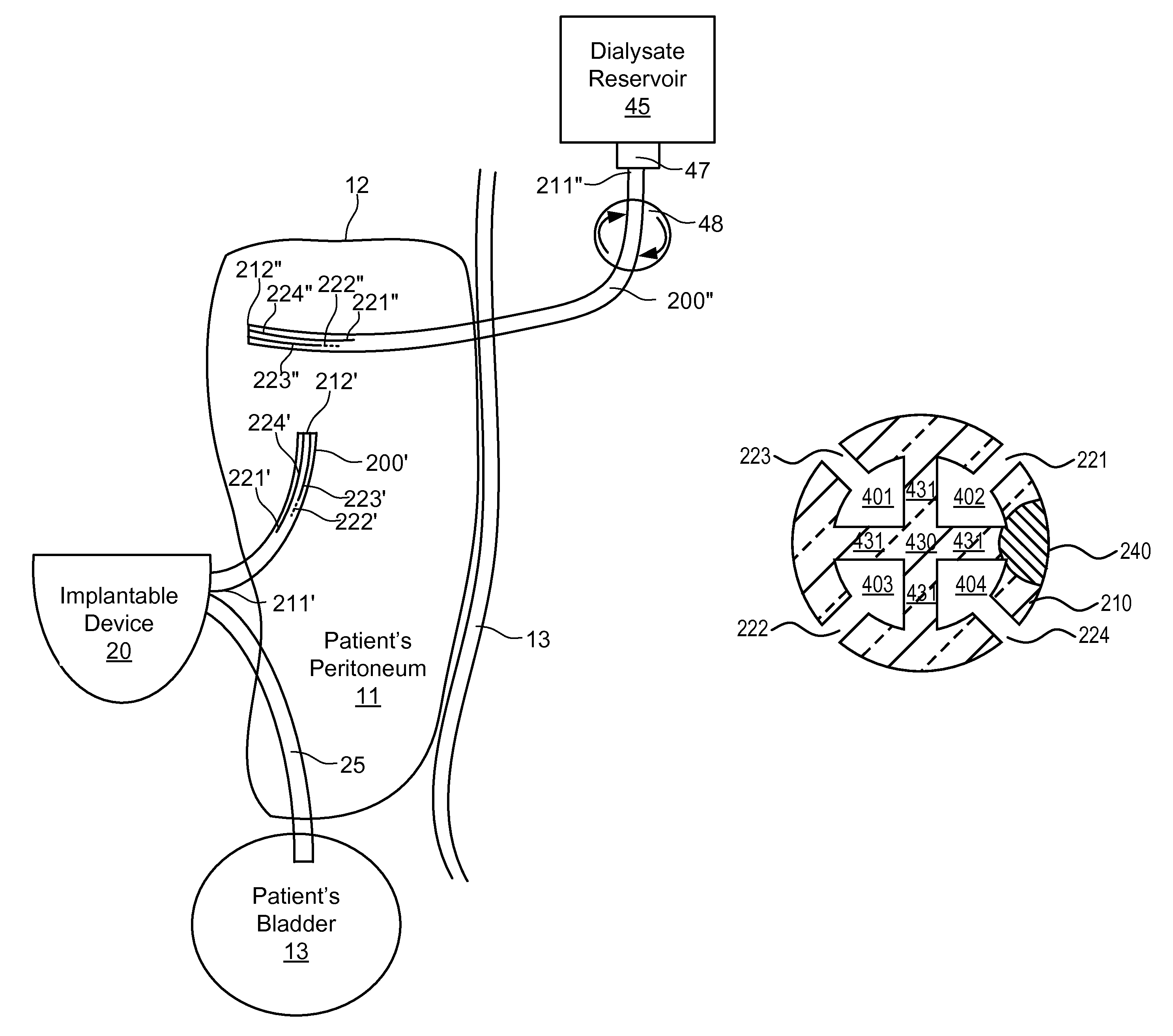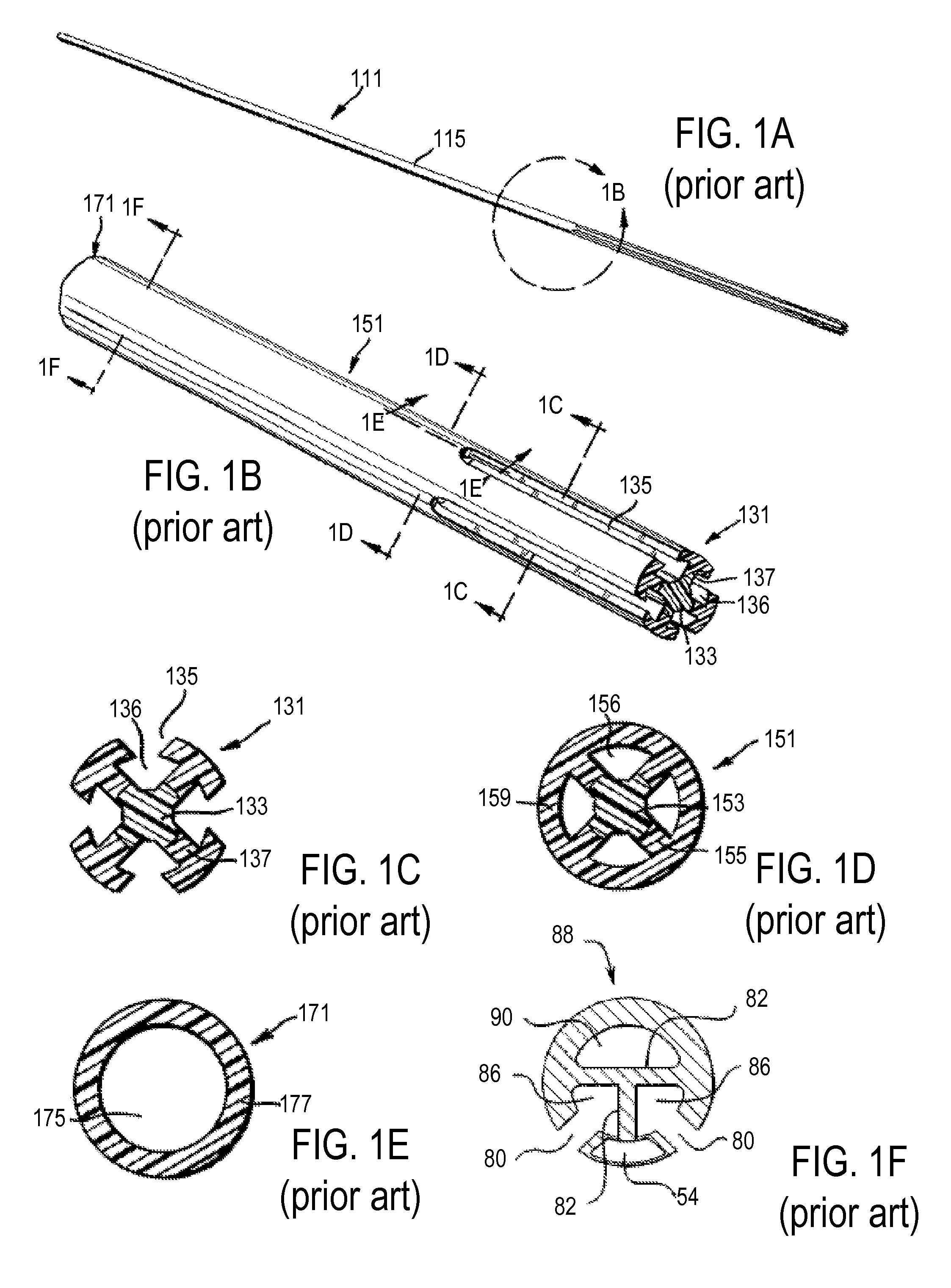Implantable catheters with staggered slits, and methods of using same
a technology of implantable catheters and slits, which is applied in the field of catheters, can solve the problems of blockage of apertures, difficult to remove drains at a later time, and unsuitability for long-term use, and achieve the effect of increasing the likelihood of lumens
- Summary
- Abstract
- Description
- Claims
- Application Information
AI Technical Summary
Benefits of technology
Problems solved by technology
Method used
Image
Examples
Embodiment Construction
[0043]Embodiments of the present invention provide implantable catheters with staggered slits, and methods of using the same. Such catheters are fully implantable with the body, and are provide enhanced resistance to blockage. Specifically, the catheters include a generally tubular elongate member, in which a plurality of slits are defined. In contrast to the slits disclosed in the Blake patents and in Ruddell, the inventive slits are of different lengths than one another; that is, the slits are “staggered” along the length of the elongate member. As such, the slits provide fluidic communication between an environment, e.g., a patient's peritoneal cavity, and lumen(s) within the elongate member, but have a reduced susceptibility to blockage because any potential source of blockage, such as a portion of the patient's intestine, lesser omentum, or greater omentum, is unlikely to simultaneously block all of the slits at once due to their staggered configuration. The staggered slits thu...
PUM
 Login to View More
Login to View More Abstract
Description
Claims
Application Information
 Login to View More
Login to View More - R&D
- Intellectual Property
- Life Sciences
- Materials
- Tech Scout
- Unparalleled Data Quality
- Higher Quality Content
- 60% Fewer Hallucinations
Browse by: Latest US Patents, China's latest patents, Technical Efficacy Thesaurus, Application Domain, Technology Topic, Popular Technical Reports.
© 2025 PatSnap. All rights reserved.Legal|Privacy policy|Modern Slavery Act Transparency Statement|Sitemap|About US| Contact US: help@patsnap.com



